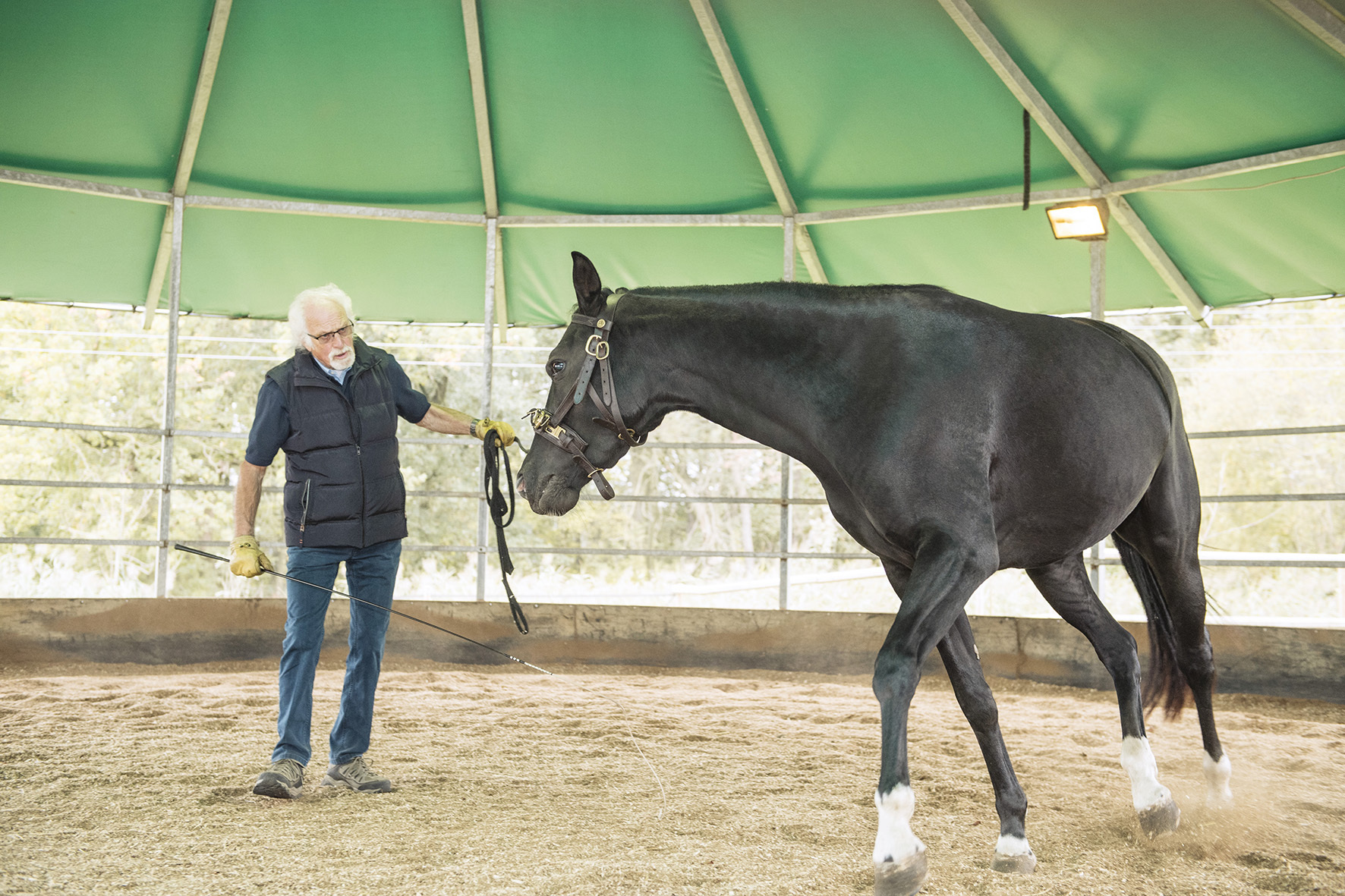The positioning of the eyes and the natural crookedness
At the beginning of crookedness therapy horses show an external rotation of the outside eye while bringing the head and neck inside the stance. Horses show the same behavior during free run in the riding arena; jumping horses during their turn between two jumps. If one keeps watching one can see how the rotation of the external eye runs together with bracing the neck muscles.
How come?
As with all living creatures the optical system and the equilibrium work close together. The equilibrium consists anatomically of three areas which are connected tight between each other:
- the vestibular system (in a broader sense the ear)
- the proprioception and
- the optical system with its visual pathways and eye muscles
Inside the ear and the vestibular system sits the labyrinth. Inside the labyrinth are receptors which note every change in the surrounding and the ear and pass this information on as an impulse. Part of the impulse is going directly to the eye, neck and body muscles which ensure balance at any positioning of the head. The other part of the impulse reaches together with the Cranial nerve VIII. the brainstem. These nerve nuclei are all connected to the eye muscles and continue their way up to the cerebellum, the central organ for fine-tuning of movements. The cerebellum also determines motor learning and is the reason why humans, even after years, don’t forget how to ride the bicycle and why horses are able to recall a dressage lesson.
The vestibular system supports the proprioception. The proprioception consists of sensors that register every move of the muscles, tendons, ligaments and joints and forward this information through the spinal cord to the brain in order to let us and the horse know at any time «where our head is headed».
The implementation of the balance process shows at the beginning of the crookedness therapy. The crooked horse is thrown out of balance at the beginning of the crookedness therapy. On its dominant hand it suddenly can’t put its weight on its shoulder any longer as it’s used to but is thrown into a new motion. This new motion causes pose and motion sensors of muscles, ligaments, tendons and joints (proprioception) to send different impulses to the central nervous system than they used to. These impulses reach through the spinal cord the cerebellum which returns impulses to the muscular system to stabilize balance. Other movements of the muscles, especially in the neck and around the head (tenseness of neck muscles) always lead to a change of receptors inside the labyrinth of the ear (vestibular system). The impulses send from here either reach directly the eye muscle nerves or reach through brainstem and cerebellum the eye muscles and cause a change of eye positioning. The horse looks with the outer eye back. The positioning of the outer eye is therefore a sign of a balance problem and thereby for the crookedness.

With progressing correction of the crookedness the horse straightens up on the hind leg. Shoulder and neck are able to move freely. A neck that moves freely within the movement means minimal change in the vestibular system. The balance is not disrupted and the outer eye is not looking back any longer. Furthermore did the reduction of the crookedness lead to a motor learning process inside the cerebellum. The horse can retrieve new mobility and is now ready for the next step, including its rider.
